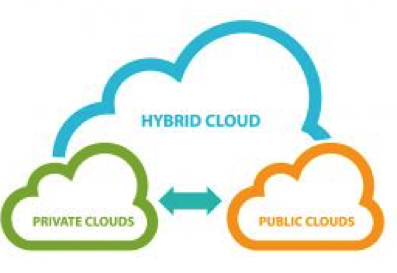Hybrid Cloud Products Maturing
To become hybrid multi-cloud
This is a Press Release edited by StorageNewsletter.com on August 5, 2022 at 2:03 pm This report, published on August 4, 2022, was written by Jerome M. Wendt, president and founder, DCIG, LLC.
This report, published on August 4, 2022, was written by Jerome M. Wendt, president and founder, DCIG, LLC.
Hybrid Cloud Products Maturing to Become Hybrid Multi-cloud
Many data protection and storage providers highlight and promote their products’ hybrid cloud capabilities. However, their products continue to evolve to deliver more robust cloud functionality. As they do, the term ‘hybrid cloud’ fails to fully capture their increased functionality. Many have become hybrid multi-cloud offerings that manage, support, and work across multiple different providers’ clouds.
Shortcoming of Term “Hybrid Cloud”
Any product that lists ‘hybrid cloud’ as a feature typically means it supports and/or manages both on-premises and cloud infrastructures. In that context, the phrase ‘hybrid cloud’ certainly fits. Unfortunately, this phrase shortchanges the capabilities of many products.
Many products started their hybrid cloud journey supporting an on-premises infrastructure and one provider’s cloud. In many cases, they already supported on-premises storage and added support for storage at Amazon Web Services (AWS).
They specifically added support for storing and managing data on AWS’ object storage cloud offering Simple Storage Service (S3). Once added: these providers now had a hybrid cloud capable product.
Then these providers kept on innovating. They began to support and manage object storage offerings from other general-purpose cloud providers. Some began to support Microsoft Azure Blob Storage. Others added support for Google Cloud Storage. More also introduced support for object storage offerings from private cloud storage provides such as Wasabi.
Yet as this technology innovation occurred, the hybrid cloud naming convention stuck as this picture illustrates. While not ‘bad’ or ‘wrong,’ the term ‘hybrid cloud’ does a disservice to providers and consumers alike. Hybrid cloud simply fails to communicate the product’s full capabilities and how organizations may utilize it.

Maturing to become hybrid multi-cloud
A product’s ability to support and manage object storage in multiple providers’ clouds represents only one area of increased multi-cloud maturity. Another example shows up in how more providers have upgraded their management interface to manage their product across multiple clouds.
This becomes important for the following reason. If only deployed on-premises or in one provider’s cloud, providers often customize their product’s management interface. If deployed on-premises, they may integrate it with VMware vCenter Server or the Windows Admin Center. If deployed in a general-purpose provider cloud, such as AWS, they may integrate it with AWS Identity and Access Management (IAM). In this way, they centrally manage backup in that environment as any other administrative function.
However, when protecting applications and workloads or storing data across multiple clouds, this integrated approach breaks down. An organization may then have to log into each environment (cloud or on-premises) to manage backup, recoveries, and/or storage.
In response, more providers do one or both of the following. They offer a central interface, ideally cloud-based, that centrally manages their product across both on-premises and multiple cloud environments.
Alternatively, they integrate with third-party management interfaces. Products going into large enterprises often integrate with products such as Chef Automate, ServiceNow, and VMware vRealize to centrally manage the environment. Others going into small and midsize enterprises may integrate with a remote monitoring and management tool, such as Kaseya VSA.
More products becoming hybrid multi-cloud
Some organizations will remain on-premises indefinitely. Others will operate only in one provider’s cloud indefinitely. However, recent trends indicate that most organizations plan to host their applications, data, and/or workloads in not one but multiple clouds. This may require they select products that possess multi-cloud capabilities.
If that represents your organization’s end game, minimally do the following. Identify products that manage object storage across multiple clouds. It should also offer one or more options to centrally manage the product.
Unfortunately, right now, organizations still cannot easily discern which products deliver these hybrid multi-cloud capabilities. Most providers describe their product’s hybrid multi-cloud capabilities as ‘hybrid cloud.’ This term ultimately benefits neither the providers who want to sell their product nor organizations that want to derive more value from these products.













 Subscribe to our free daily newsletter
Subscribe to our free daily newsletter

